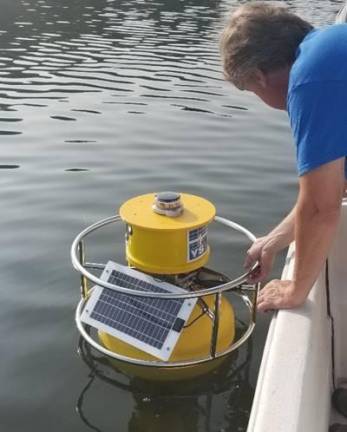Algal advisory lifted for some Lake Hopatcong beaches
PUBLIC HEALTH. The NJ DEP today announced it has lifted the Algal advisory for six Lake Hopatcong area beaches.


Department of Environmental Protection’s harmful algal bloom advisory has been lifted for six bathing beaches in the area of Lake Hopatcong stretching from Byram Bay to Halsey Island.
The DEP and New Jersey Department of Health have advised local health officials that the following beaches can reopen: Pebble Beach, Sand Harbor, Bass Rock Beach, Sperry Springs Beach, Beck Lane Beach and CAPP Beach.
“We are pleased that some areas of the lake are showing improvements and that these bathing beaches may now reopen,” Commissioner Catherine R. McCabe said. “At the same time, the public must remain mindful of the possible presence of harmful algal blooms and avoid contact in areas where a bloom has been detected, especially when it comes to small children and pets.”
The six beaches have met the state’s Health Advisory Guidance levels for two consecutive sampling rounds.
The Byram Bay Community Club Beach and Clearwater Beach in this area remain under advisory and closed pending further water sampling tomorrow. In addition, the beach at Hopatcong State Park at the southern end of the lake remains closed. They have not yet met this requirement, but all attempts will be made to safely open them this weekend if testing data supports this action.
The lifting of the advisory for the six beaches follows lifting of advisories over the past several weeks for open-water sections of the Byram Bay to Halsey Island section of the lake, specifically Indian Harbor, Henderson Cove and Byram Cove.
The advisory recommending the public to not swim in or come into contact with lake water remains in effect for all other portions of the lake.
Swimming and water sports such jet-skiing, water-skiing, paddle-boarding, canoeing or kayaking should be avoided outside of these areas.
Harmful algal blooms, also known as blue-green algae, are usually a bright green, but can also appear as spilled paint, “pea soup,” or as having a thick coating or “mat” on the surface. These blooms are not true algal blooms but are caused by any of various species of cyanobacteria.
Cyanobacteria measurements taken on Monday ranged from 4,500 cells per milliliter at CAPP Beach to 18,625 cells per milliliter at Pebble Beach. The state Health Advisory Guidance level is 20,000 cells per milliliter. Toxin levels at each of the beaches are below the 3 micrograms per liter.
Exposure to a harmful algal bloom can cause a range of health effects, including rashes, allergy-like reactions, flu-like symptoms, gastroenteritis, respiratory irritation and eye irritation. Exposure to a harmful algal bloom that is actively producing cyanotoxins may result in more serious health effects, including liver toxicity and neurological effects.
DEP’s sampling has not indicated the presence of toxins that can cause these more serious health effects. However, harmful algal blooms may begin producing cyanotoxins at any time.
Pets are particularly vulnerable to the effects of cyanobacteria and the toxins the produce and should not be allowed to drink or enter water where a bloom is suspected.
Cyanobacteria are naturally present in lakes and streams in low numbers. Under suitable environmental conditions – sunlight, high nutrients, warm temperatures and calm water – dense cyanobacterial blooms can form.
An advisory is not a ban or an order for lake closure. An advisory is a form of guidance. No one would be ticketed or removed from the water if they choose to swim or engage in water sports when an advisory is issued. An advisory is meant to provide the public with information to help people make choices for themselves.
When an advisory is issued, New Jersey Department of Health regulations require local health departments to close public bathing beaches to reduce the public risk that could result from bodily contact with the water. A bathing beach closure does not mean that a lake is “closed” for other recreational activities, like boating. People must exercise their best judgment when deciding whether to engage in the type of boating (e.g., kayaking, paddle boarding, jet-skiing) that could put them in bodily contact with the water.
There is no suggested limitation on more passive boating that does not involve bodily contact with lake water.